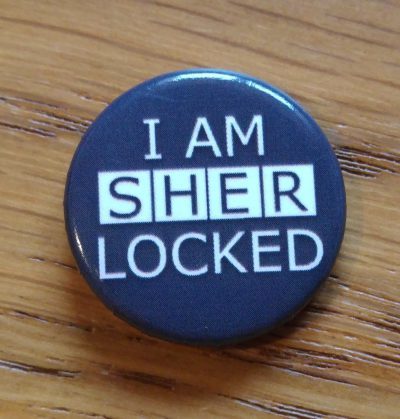Debbie Young's Blog, page 38
December 24, 2016
Pray Fill Your Glasses for 2016
In my December column for the Tetbury Advertiser, I tried to put the tumultuous events of 2016 into perspective
[image error]As 2016 draws to a close, few will mourn its passing. From the start, it seemed a blighted year, robbing us of many national treasures and bringing us Brexit and President-Elect Trump.
Scrolling back through the year to seek more positive memories, I discover the event that filled me with most hope was the centenary of the Somme.
Ironically, one of the bloodiest battles in human history became a source of hope when at 7:30 AM on July 1st, vast numbers of people gathered nationwide to commemorate those who gave their todays for our tomorrows, and again on Remembrance Day last month. It was heartening to see people from throughout society turn out for these events, including many young people and children. It is especially heartening that so many of the youngest generation want to honour them though very few have met anyone born during that era and perhaps feel no immediate personal connection.
Celebrating Cousin Nina
[image error]My grandma’s late cousin Nina, who celebrated her 100th birthday in May, with my daughter Laura last year
My daughter is lucky to be an exception. She has been able to get to know my grandma’s cousin Nina, born before the Battle of the Somme began. We helped her celebrate her hundredth birthday this year. Each time we visit her, we feel we are touching history and witnessing at first hand the human instinct to survive in the face of adversity. Nina has been widowed four times, but is currently single, as common parlance has it. (Sadly, Nina passed away just after I wrote this column – but rather that blame 2016, I view her survival to 100 more of a miracle than a curse.)
Reasons to be Cheerful
Such special occasions lift my spirits beyond the quagmire of the daily news headlines.
Every day brings reasons to be hopeful, if only we remember to look for them.
Yes, I know that’s easy for an optimist to say. I realise not everyone is such a Pollyanna like me. During an interviewed the other day on BCfm Radio, I told the presenter, historian and historical novelist Lucienne Boyce, that I’m a glass-half-full person. I was amused by her response “I’m the kind of pessimist that can’t even see the glass”. Perhaps for 2017 we should each resolve to find out glass and fill it.
A Force for Good
We may look back on 2016 as an annus horribilis, but as future generations will discover, it will also be a year when great men and women were born who will in time be a force for good. If you’ve become a parent or grandparent this year, you’re probably agreeing already.
To encourage sceptics, here’s a reminder of two great men born in 1916:
Francis Crick, Nobel laureate, co-discoverer of DNA’s molecular structure, arguably the most important scientific discovery of the 20th century
mould-breaking author Roald Dahl, who has brought laughter and comfort to readers young and old for generations
If such greatness can come forth phoenix-like from such desperate times, maybe everything will come right for us too.
I wish you peace, joy and love this Christmas, and may your glass remain full in the New Year.
Filed under: Family, Writing Tagged: 2016, 2017, Lucienne Boyce, optimism, reasons to be cheerful, Remembrance Day, Somme

December 13, 2016
Multitasking Gone Mad – The Agony Aunt Under Anaesthesia
[image error]A news flash about my new role at Self-publishing Magazine
People often say to me “how do you manage to do so much?” Of course, they are seeing only my output rather than the massive to-do list on the overcrowded desk in my study. Normally a glass-half-full person, my inner optimist daily quails at my sins of omission – all the things I should have done by now but haven’t. But even I had to be impressed at my apparent ability to post an advice piece in Self-Publishing Magazine while under general anaesthetic…
What is Self-Publishing Magazine?
Self-Publishing Magazine is an online publication produced by Matador, which helps authors self-publish their books through its Troubador imprint. I know quite a few authors who have used its service, and I was pleased last year to be invited as a guest speaker at their annual Self-publishing Conference. I was sad to have to turn down the opportunity to appear at their 2017 event because it’s on 22nd April – the same day as the local litfest that I run in my village, the Hawkesbury Upton Literature Festival.
My Role as Agony Aunt
 However, I was pleased to accept an invitation to be an occasional agony aunt for the publication, answering questions put by their readers, drawing on my knowledge as an indie author and commissioning editor of the Author Advice Centre blog for the Alliance of Independent Authors.
However, I was pleased to accept an invitation to be an occasional agony aunt for the publication, answering questions put by their readers, drawing on my knowledge as an indie author and commissioning editor of the Author Advice Centre blog for the Alliance of Independent Authors.
My first column for Self-Publishing Magazine, answering the question “How do I keep writing every day even if I get writers’ block?”, was due for publication on the same day as my recent operation, giving the impression that not even a general anaesthetic was enough to stop me multi-tasking.
Of course, it was actually written some in advance and scheduled to go live that day. Though the tweeting taking place on the day of my operation wasn’t. (Hurrah for free hospital wifi!) Not even a general anaesthetic can keep me offline for long.
If you’d like to read the article online, just hop over to its website here.
In the meantime, I’m off to tidy my desk…
Filed under: Self-publishing, Writing Tagged: Alliance of Independent Authors, Matador, Self-publishing, Self-Publishing Magazine, Troubador

December 11, 2016
20 Things I Learned in Hospital
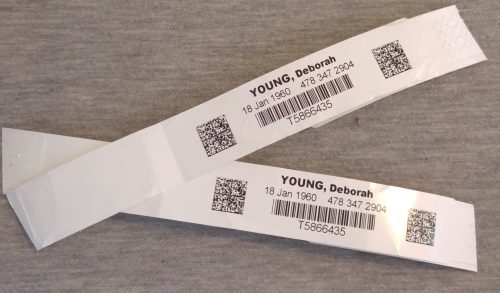 It’s a little alarming that they insist on putting a hospital identity bracelet on both wrists, as if there’s a chance you might lose an arm inadvertently during your operation so need the spare
It’s a little alarming that they insist on putting a hospital identity bracelet on both wrists, as if there’s a chance you might lose an arm inadvertently during your operation so need the spareI’ve been a bit silent on the blog the last couple of weeks, in the aftermath of a minor and benign piece of surgery that required an overnight stay in hospital. The recommended fortnight’s convalescence off work has not quite expired yet, but I’m an impatient patient.
Not Holding My Breath
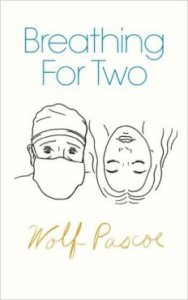 Surprisingly reassuring reading before my surgery
Surprisingly reassuring reading before my surgeryThis is the first time in nearly twenty years that I’ve undergone a general anaesthetic. The last time I was left in a slight panic when the anaesthetist told me they’d had trouble getting me breathing again afterwards. Seeing the look of horror on my face, he replied cheerfully, “Oh, don’t worry, we happened to have the best anaesthetist in the region in theatre that day.”
“I’m not liking the words ‘happened to have’ in that sentence,” was my reply.
This time round I was therefore disproportionately nervous at the prospect of the anaesthetic. To me this was far more alarming than the planned surgical procedure to remove a gland in my throat that had become blocked by a stone. It was a bit like a gallstone or kidney stone in that it had formed naturally, rather than the result of my eating gravel. I explained it to my daughter as being similar to the build-up of limescale in our kettle, a side-effect of our living in the Cotswolds with its very hard water.
I expected it to be a simple procedure, a bit like using the special blade on a Swiss Army knife to remove a stone from a horse’s hoof. I only discovered afterwards that it counted as a major operation, because the whole gland, the size of a plum, had to be cut out. Which still didn’t sound major to me, because, after all, I’d had something much larger removed in my most recent surgery, done while fully conscious: a planned Caesarean (planned to avoid the risks of a general anaesthetic, after the previous non-breathing experience). A seven-pound baby versus a plum? No contest, surely?
The First and Biggest Lesson from my Operation
That was perhaps the biggest lesson of my hospital stay:
the pain of an operation isn’t in direct proportion to the size of the item being removed
Re the post-baby pain, having a beautiful new baby to take home probably took my mind off any discomfort. I suspect the body releases natural endorphins or some such as part of the process.
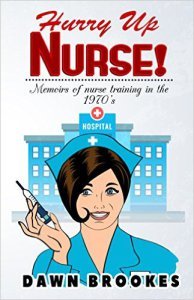 Perhaps not the most tactful book for me to take into hospital
Perhaps not the most tactful book for me to take into hospitalAfter my latest op, my baby, now 13, was disappointed that they didn’t give me the stone to bring home in a jar. Keen on handicrafts, she was hoping to fashion it into some fetching piece of souvenir jewellery. When we had to take her to the emergency room when she was about three, at least she got to take home the doll’s shoe they had removed from up her nose.
Of course, the scale of my hospital experience is a mere scratch in the scheme of things. I am in awe of friends and relations who have been going through huge and ongoing medical traumas, in one case for over fifteen years, and in another requiring a fourteen hour operation by three different specialists. I’m naming no names for fear of embarrassing them, but you know who you are folks, and you are an inspiration. I feel like a wimp for making such a fuss.
But on the other hand, talking about it so much, and getting sympathy from them and from others, helped me face what to me was a significant fear, and I cannot thank you enough for all for your support. If there’s a next time, I shall be better mentally prepared, having had this experience, and I’ll make less fuss. Well, maybe.
The Other Nineteen
Finally, here’s the list of the other 19 things I learned in hospital, for your instruction and entertainment:
“If you cut a hole in your neck and take something out of it, it will hurt.” – technical advice received from my consultant the morning after
They really do use a marker pen to draw on your body to make sure they operate on the correct side.
A zip-up floor-length dressing gown (Marks and Spencer, £35) is the perfect antidote to the immodest compulsory NHS nightgowns that open from the neck down the back.
If you’re on nil-by-mouth from midnight till 5am before your op, it is worth setting the alarm for 4.30am for a very early breakfast.
My habitual weak tea is so weak that when from 5am until 9am (water only), I substituted hot water, I could hardly tell the difference.
Usually an unswerving three-meals-a-day girl, I can survive twelve hours without food, but it helps when to be told initially that it will be four hours, then six, then eight, etc as your name gets moved down the list of priorities for theatre that day.
I was very happy to be repeatedly moved down the list because it meant I scored top marks for healthy patient out of the whole list (admittedly at least one of the others was 92).
Even if you tell your family not to bother visiting after the op in case you’re not awake, it’s very nice when you wake up to find them by your bed and bearing gifts.
Asparagus soup post-op is the food of the gods (delivered via the earthly presence of my sister).
You’re never too old to be comforted by cuddly toys. (Thanks to my sister for the reindeer.)
Knowledge is power and reassuring in advance of surgery – even reading a tell-all memoir by an anaesthetist, listing the things that can go wrong, was a comfort to me. (I’ve reviewed Wolf Pascoe’s Breathing for Two on my book blog, and I highly recommend it.)
On the other hand, a book called Hurry Up Nurse by Dawn Brookes was not the most tactful reading matter to keep by my hospital bed (though I did enjoy it – review to follow shortly.)
Working out where the medical staff come from is an interesting distraction. I mentally awarded the delightful male nurse who was Filippino with Hawaiian parents the prize for most exotic heritage from the vast team I met in my two day stay, and they were all wonderful.
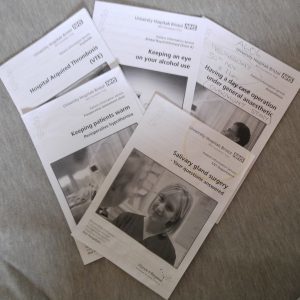 Keeping warm makes a big difference to the speed of recovery – it’s not just an old wives’ tale to “wrap up and keep warm”, I was given a leaflet entitled Perioperative Hypothermia. Who knew?
Keeping warm makes a big difference to the speed of recovery – it’s not just an old wives’ tale to “wrap up and keep warm”, I was given a leaflet entitled Perioperative Hypothermia. Who knew?Adjustable beds that allow you to move the back and knee areas up and down are not an indulgent luxury or medical necessity, but the most sublime comfort ever. I want one for home.
Free hospital wifi and a smartphone are a great way to diminish the potential isolation of being in hospital, even if people do think you’re a bit crazy for tweeting from your hospital trolley.
My mum and dad still worry about me when I’m poorly even though there are two younger generations in the family after me. Of course they do.
The Bristol Royal Infirmary, though still on its old site, has the most fantastic modern facilities – a private ensuite room is standard on the ENT ward unless you need high-dependency care and the greater visibility and accessibility of being in a ward.
It was so relaxing and I felt so well looked after that I didn’t really want to go home.
Finally, I should add that the experience reminded me that the NHS is one of the very best things about living in Britain. But that’s really something I knew all along.
Thank you for bearing with me, and I wish you all a very healthy New Year!
Filed under: Family, Personal life

December 5, 2016
The Obvious Solution to a Christmas Giftwrapping Crisis
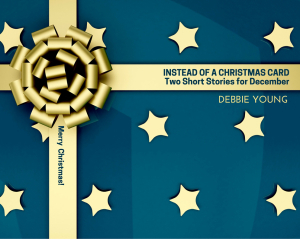 Is it a card? Is it a present? I don’t care, it’s dead easy to wrap!
Is it a card? Is it a present? I don’t care, it’s dead easy to wrap!Starting to sort out my box of Christmas gifts that I’ve been steadfastly filling over the last few weeks, my heart sinks at the odd shapes that I’ve committed myself to wrapping. I still have quite a few presents to buy, including the one at the top of my daughter’s wish-list – a pair of Heelies (wheeled trainers). I’m hoping these will come in a box, or I’m in trouble.
Boxing Clever
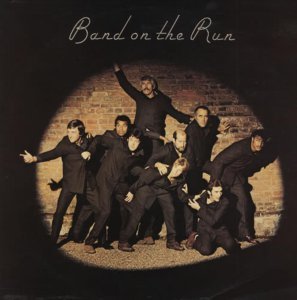 …as was the girlfriend shortly afterwards (Photo via Amazon store)
…as was the girlfriend shortly afterwards (Photo via Amazon store)I’m reminded of a Christmas in my teens when my then-boyfriend decided to liven up his gift wrapping by disguising his presents to look like something else, so that the recipients couldn’t guess what they were. I’d asked him for an LP of Wings’ Band on the Run. (Yes, I am that old – and for my more youthful readers, I should probably explain that an LP is a long-playing record album, as opposed to a single. Yes, we’re talking vinyl here – out of fashion long enough for it to be coming back into vogue again now.)
When he brought my gift round, it was a big box the size of an LP but about four inches deep.
Oh, how lovely, I thought, he’s bought me something extra too. I wonder what it is?
Cue huge disappointment when the parcel turned out to contain only the record, plus a lot of empty packaging. I tried not to look crestfallen. After all, we were only teenagers, and records were expensive.
Unfortunately he didn’t know that when you are in a hole, you should stop digging. Guessing that I’d expected something else, he added in his defence “My mum said not to get you anything else in case you split up with me again.”
I bet you can guess how that relationship ended up.
Booked Up
In the meantime, I’ve decided that for the rest of my Christmas shopping this year, I’m going to buy the ultimate easy-to-wrap present for everyone – a book, carefully chosen to suit each recipient’s interests, so that I can put my energy into the fun of book browsing rather than wrestling with wrapping paper.
If you’re after festive books for your friends and relations, let me leave you with a few recommendations. Biased, me? Well, it is my blog,
November 26, 2016
Of Jealous Guys and Ambitious Bonfires
(This is my November column for the Hawkesbury Parish News , published just before the annual village Bonfire Night celebrations)
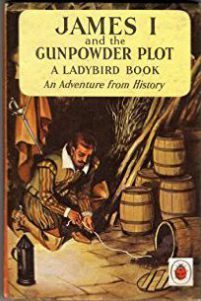 All you need to know about Guy Fawkes in child-friendly detail (image: Amazon UK)
All you need to know about Guy Fawkes in child-friendly detail (image: Amazon UK)I’m old enough to remember not only the time when “Penny for the Guy” was a common cry at this time of year, but when a penny would be enough to buy something.
You could get four fruit salad sweets or a chocolate mouse for a penny. Or for just a few pennies, you could buy the cheapest fireworks from our local Post Office. My favourite was a box of coloured matches, while naughty boys preferred bangers or jumping jacks. Children were allowed to buy them, and we did. These days we may complain that health and safety regulations have gone mad, but looking back, you can see why we needed to invent them.
My favourite childhood memory of Fireworks Night was our family party. Raised in London suburbia, I was lucky enough to live in a house on the corner of the street, with a wrap-around garden big enough to host a decent bonfire without torching either the guests or the neighbours. That’s something you couldn’t do in most modern estate houses.
Each year our guy got sent on his way atop a pile of crumpled newspaper and sticks. In that simpler age, it didn’t occur to us to build a bonfire shaped like anything other than a bonfire.
Not so now we live in Hawkesbury, where the village bonfire is always a spectacular structure: Tower Bridge last year, complete with London bus. What shape will this year’s be? Whatever it is, if the old guys we used to make could see it, they’d be flabbergasted. Some guys have all the luck, they might say.
 The answer: Hawkesbury’s 2016 Bonfire Night set fire to the Hogwarts Express (Check out the two people standing to the left of the picture for an idea of the giant scale of the train!) Photo by Andy Musty
The answer: Hawkesbury’s 2016 Bonfire Night set fire to the Hogwarts Express (Check out the two people standing to the left of the picture for an idea of the giant scale of the train!) Photo by Andy MustyFiled under: Events, Personal life Tagged: Bonfire Night, Guy Fawkes Night, Harry Potter, Hawkesbury Parish News, Hawkesbury Upton, Hogwarts Express

November 24, 2016
Talking Turkey for Thanksgiving and Christmas
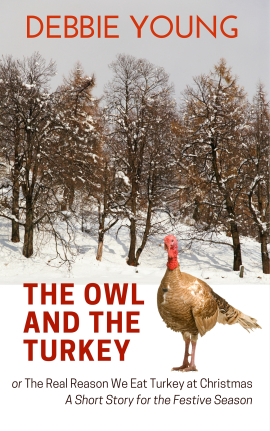 Now available in a tiny single story paperback as well as an ebook single
Now available in a tiny single story paperback as well as an ebook singleAs today is Thanksgiving in the USA (Canada’s is the second Monday in October), I thought it could be a good time to let you know about a new mini paperback I’ve just published about a turkey.
An owl and a turkey, to be precise. (Always one for an obvious title, me.)
Different Turkey Traditions
While turkey is the classic Thanksgiving dish in North America, here in the UK where I live, it’s inextricably linked with Christmas dinner. Most British households will tuck into a turkey on Christmas Day – though not ours, because my husband and daughter are vegetarian. Much as I like turkey, I certainly couldn’t eat a whole one.
So my story has a British take on the old bird’s destiny. It’s told in the style of a traditional folk tale, in which a new young queen, bored of wild boar, despatches the royal huntsmen on Christmas Eve to find a new dish for Christmas dinner, with entertaining results.
The Story Behind the Story
The story behind the story is much more modern. It was sparked by my mishearing a news report on the radio one winter’s morning, which included the line “The trouble with turkey is that it doesn’t have its own missile defence system.”
Did I say turkey? Of course, the newsreader was actually talking about Turkey the country. But by the time I realised my mistake, my overactive imagination was already running away to invent an entirely different kind of tale.
Now in Paperback and Ebook
This story was originally published as a stand-alone single short story ebook. It was also selected to appear behind the door of an online advent calendar at the parenting website Mumsnet a couple of years ago, which really tickled me. One day I hope to write a whole advent calendar of stories myself. Maybe next year…
In the meantime, I’ve turned this story into a tiny slim paperback the size of a postcard and not that much thicker! It could be the perfect stocking filler for foodie friends or anyone who likes a humorous story, or you could even slip it inside a Christmas card.
The paperback is priced $3.99 / £2.75 and the ebook 99c / 99p.
You’ll find it easily on whichever Amazon website serves where you live – just plug my name and the book title into the search box, and up it’ll pop. You can also click the “look inside” link there to read the foreword and first couple of paragraphs to get the, er, flavour of my turkey tale before you buy.
Suitable for vegetarians: I can assure you no birds were harmed in the writing of this book!
Some 5* Reviews for The Owl and the Turkey on Amazon (from both sides of the Atlantic)
“Crisp, clever, fast-paced- this short story receives my highest recommendation” – Ginger Dawn Harman on Amazon.com
“A neat short which made me smile (and I’m a vegetarian!) all about how the poor old turkey became the victim of choice at Christmas. Carefully crafted and entertaining, it draws you into the tale much as you were drawn as a child. You know it cannot be true, but can’t help but enjoy the storytelling. Lovely.” – Leekmuncher on Amazon.co.uk
“I think the reason I loved this story was because it had the feel of a French folk tale of yore. The court, the outrageous demands, the competitive quest, the castle and forest, all set the imagination off in romantic direction… This story could be read to children before or after the Christmas feast of today. Parallels could be usefully drawn with current food whims and demands!” – Rosalind Minett on Amazon.co.uk
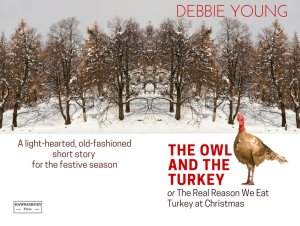 Whichever side of the Atlantic you’re on – or whether you live far away from it – I wish you a happy Thanksgiving, whether or not it’s an official day for counting your blessings where you live.
Whichever side of the Atlantic you’re on – or whether you live far away from it – I wish you a happy Thanksgiving, whether or not it’s an official day for counting your blessings where you live.
Filed under: Writing

November 22, 2016
Guys and Trolls – My November Column for the Tetbury Advertiser
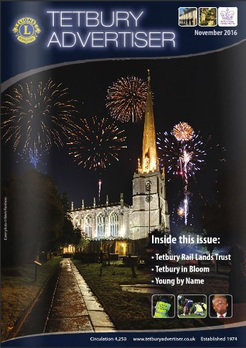 Probably the first and last time Donald Trump will feature on the cover of the Tetbury Advertiser – the editor put him on there because of my commet about his hair towards the end of my Young By Name column this month!
Probably the first and last time Donald Trump will feature on the cover of the Tetbury Advertiser – the editor put him on there because of my commet about his hair towards the end of my Young By Name column this month!(This post was written for the November issue of the Tetbury Advertiser , which was published prior to both Guy Fawkes Night and the US Election)
“We don’t do Halloween in our house, because it’s all about fear and ingesting too much sugar,” said a friend of mine halfway through October. With two children under five in her household, the second point alone was something to fear.
While her comment didn’t make me cancel the Halloween party I’d promised my daughter (13), it did remind me that prior to becoming a parent, I’d been anti-Halloween too.
I’d preferred Guy Fawkes Night, believing it to be a more patriotic tradition until I discovered recently that Halloween was a British export to America.
Who’s That Guy?
Even so, when I was a child, we never celebrated Halloween. My first taste of trick or treating was when I spent a year in the USA at the age of eight. No-one over there had ever heard of Guy Fawkes Night. Fireworks, they told me, were for the Fourth of July, not the Fifth of November.
Back on home turf, we resumed our annual family Guy Fawkes parties. As a child, chucking an effigy on a bonfire and watching it burn never bothered me. These days, that spectacle horrifies me. Even if Guy Fawkes was caught red-handed in the act of attempted mass murder, burning him in effigy for hundreds of years afterwards is hardly a civilised response. It’s not far removed from reenacting a public hanging with a mannequin, or seeing a dressmaker’s dummy hung, drawn and quartered.
Variation on a Horrid Theme
These days most Guy Fawkes Night parties have moved away from the original cast, losing any historic justification in the process. Some communities even have elections to choose who to burn in effigy. I daresay there will be plenty of Donald Trumps atop our nation’s bonfires this month. To be fair, his hair would make a great firelighter.
I hadn’t realised how strongly I felt about this issue until I read a request from our local Fireworks Party committee to send along the scarecrows from the recent village scarecrow trail to grace this year’s bonfire. I was aghast, and not only because four new IKEA lime-green blankets went into the giant Very Hungry Caterpiller in our front garden. Most of the other scarecrows had been equally lovable figures, including a sweet elderly couple with a zimmer frame outside the local retirement home. I imagined local children being traumatised by seeing their favourite storybook characters go up in smoke, their parents worrying that granny had wandered into the danger zone by mistake.
So my vote goes for a humane rethink of Guy Fawkes. By all means keep the bonfires and the fireworks. I’m even happy for you to make a Guy. But when you’ve finished, please don’t burn him at the stake. Just chuck him in your cellar, lock the door, and throw away the key. Or export him to the States to stand as president. They could do with a good guy as candidate.
Filed under: Events, Family, Personal life, Writing Tagged: Bonfire Night, Donald Trump, Guy Fawkes, Tetbury Advertiser

November 13, 2016
For World Diabetes Day 2016: Meet Rachel Carpenter, A Fictional Heroine with Type 1 Diabetes – via her Creator, Australian Novelist Belinda Pollard
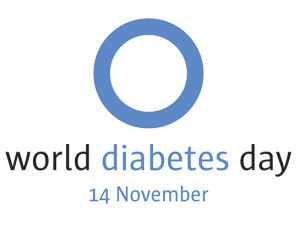
Today is World Diabetes Day. November 14th has long been designated as a day to draw attention to this important disease.
Because both my husband and our daughter both have Type 1 diabetes, I like to do something special on this day to raise awareness of this condition. The incidence of Type 1 is increasing at an alarming rate, with a radical effect not only on the lives of individuals but also on national healthcare services.
 Meet Belinda Pollard, author, editor, consultant, optimist
Meet Belinda Pollard, author, editor, consultant, optimistThis year what I’d like to mark World Diabetes Day is to introduce you to a terrific Australian author Belinda Pollard, whose novel Poison Bay features a character, Rachel Carpenter, who has Type 1 diabetes so must overcome extreme challenges when she gets lost in New Zealand wildnerness with her friends.
Although Belinda’s initial intention was just to write a great thriller, the final result is a terrific novel that will raise awareness and foster better understanding of Type 1 around the world. I was privileged to help her fine-tune the diabetes story line drawing on my family’s experience of living with the disease.
So for this World Diabetes Day 2016, I’d like to share the story behind Belinda’s story, and I’m very grateful to her for answering my questions below.
Debbie: What made you choose Type 1 diabetes as a condition for one of your characters?
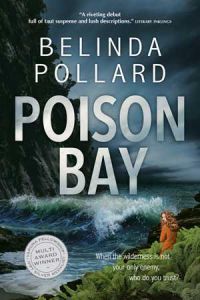 In Belinda Pollard’s thriller, Type 1 diabetes is only of many dangers facing Rachel Carpenter and her friends in their disastrous trek through New Zealand wilderness
In Belinda Pollard’s thriller, Type 1 diabetes is only of many dangers facing Rachel Carpenter and her friends in their disastrous trek through New Zealand wildernessBelinda: Poison Bay is about a group of old school friends with past secrets who go hiking in the remote New Zealand wilderness, and lose their way, both geographically and morally. Basically, they start killing one another, as old friends so often do.
The terrain and weather are brutal in Fiordland National Park, but it’s feasible that a large, well-equipped group could just sit tight and wait a few weeks to be rescued. I needed to raise the stakes. A character with Type 1 diabetes added urgency for both the lost hikers and their rescuers.
It was the plot-tensioner that came to my mind because I’ve had some friends with Type 1 diabetes over the years, even if I didn’t fully understand what daily life was like for them.
From the start, I was determined that Rachel be a physically strong character, not a feel-sorry-for-me weakling. She is the fittest of them all at the beginning, because she uses exercise to give her a sense of control over her condition.
The more I learned about Type 1 during my research, the more glad I was that I had chosen that character trait. She’s also doing her best to heal from a recent bereavement, which adds another layer of emotional strength to her.
Debbie: How did your perspective on the condition change between you starting to write the book and publication day? Did you actually know anyone with Type 1 before you started writing, or was it more of a plot device to add tension to your story?
Belinda: Big changes! There’s been a kerfuffle recently about writers who appropriate other cultures into their books in a negative way. I think the same is often true of various medical conditions, belief systems and personality traits.
I’m embarrassed to say that Rachel was little more than a plot device at the beginning.
While I was writing the first draft, I won a prize that gave me a manuscript consultation. It turned out that my manuscript consultant had a daughter with a significant medical condition. She said something about how Rachel’s mother might be feeling in this situation, and it flicked a switch in my brain.
I realised that some readers might have a strong emotional investment in Rachel’s fictional outcome, and though I knew it would be impossible to please everyone, I owed it to them to do my best. It became almost like a ‘duty of care’ in my mind.
I cruised the internet and read books, and a nurse I met online did some training with me over Skype in the various glucose meters etc that Australian diabetics most commonly use. This only got me just so far. Strangely enough, there are not that many books on how to manage Type 1 diabetes while lost in the wilderness without food for a couple of weeks!
That’s when you came into the equation, Debbie. I knew you were an advocate for Type 1 research, and we’d brushed past each other on Twitter and blogs. I screwed up my courage, and asked if you’d mind checking the Type 1 storyline for me, and you said yes!
The feedback you gave me was bracing and somewhat bruising – but also thrilling! It gave me the chance to fix some serious misunderstandings and reconfigure certain sections of the plot. I’m sure the result is not perfect, but I felt like I now had a plausible outcome for Rachel. I’m incredibly grateful for the feedback!
Debbie: How did including a character with Type 1 diabetes enhance your story?
Belinda: All my characters have challenges of various kinds. I love writing them that way, because every single person I know is fighting a battle.
Anxiety, grief, chronic fatigue, depression, Type 1 diabetes, cancer, fear of heights, social awkwardness… these or any of a million other challenges might be our daily companions, but they don’t define us. It’s our character that defines us, and we make the most of the life we’ve got.
In the same way, I want my characters’ problems to be almost incidental. I want them to be defined by how they treat other people and the great things they achieve. Hopefully, I will get better at writing ‘real’ characters as I continue to grow as a writer.
Debbie: Have you had any feedback since publication from people affected by Type 1?
No, but I see that as a good thing: apparently they’re not annoyed! (Thanks, Debbie.)
Debbie: You’ve had some healthcare challenges yourself in the past which you overcame by what I might describe as dogged determination! Can you tell us a little about that, because it seems analagous to someone trying to deal with the challenges of living with Type 1 diabetes?
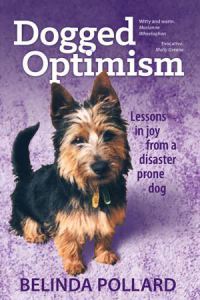 Belinda Pollard is my kind of optimist!
Belinda Pollard is my kind of optimist!Belinda: In 2004 I was bitten by a mosquito and got a virus that left me with enduring pain and fatigue. Ever the eccentric, I chose to hike New Zealand’s Milford Track as part of my rehab program! This sounds even more nuts when you know that I’m not a particularly athletic person, even when I’m well. The Milford Track is 53km over mountains that look like upside-down shark teeth, and I’d been wanting to do it as part of a research trip for Poison Bay.
I’d also heard that a program of consistent exercise helped some people heal from chronic fatigue, but exercise seemed virtually impossible to me at that time. Training for a research trek gave me a deadline as well as the motivation to push through the pain and exhaustion, and keep on plodding.
My weird rehab program wasn’t a miracle cure, but I found that with each training session I could do a little more for the same amount of pain.
The day I arrived at the start of the trek was terrifying. I really didn’t know if I would end up on the evening news, being airlifted off the side of a mountain. But somehow I did it, one painful step at a time. I have a photo of myself standing under the sign that marks the end of the track. To the casual observer, it’s not obvious that my hiking poles are acting almost as crutches by this stage, or that my heart is on fire with the joy of having done this crazy thing.
Today, I still have bad days, but I have a lot more good ones. I achieve a lot of things that didn’t seem possible in those dark early days of the illness.
 Belinda’s unusual cure for her own illness – an incredible hiking challenge!
Belinda’s unusual cure for her own illness – an incredible hiking challenge!Debbie: What was the most surprising thing you learned about Type 1 diabetes while writing this book?
Belinda: I didn’t know that exercise could reduce the amount of insulin a Type 1 diabetic needed to inject. And I didn’t know that a dwindling supply of insulin would not be Rachel’s biggest or only problem – that low blood sugar with no hypo remedies available was also a serious threat as the survival situation went on.
 Top tip: “Don’t go into the mountains with a deranged murderer”!!
Top tip: “Don’t go into the mountains with a deranged murderer”!!Debbie: What would your advice be to anyone with Type 1 diabetes who might be thinking of making a trek like the one you describe in Poison Bay?
Belinda: Don’t go into the wilderness with a deranged murderer.
November 9, 2016
The Silvery Sounds of Radio Voices
A quick post to point you in the direction of my most recent radio appearance
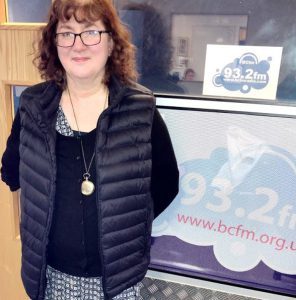 Outside the BCfm studio on Friday
Outside the BCfm studio on FridayAs regular readers of this blog will know, I love being a guest on radio shows. (I know, what a show-off!) I’m a regular guest on BBC Radio Gloucestershire, and an occasional guest on BBC Radio Bristol and 10Radio in Somerset.
It’s an added bonus when the host of the programme is an author whose work I know and respect. So I was honoured when last Friday I was invited to be the guest on award-winning historical novelist Lucienne Boyce‘s new SilverSound show, part of the Bristol community radio station BCfm.
All About SilverSound
BCfm’s SilverSound programme, which Lucienne hosts once a month, is aimed at older listeners audience. Lucienne wanted to focus on my involvement with community publishing projects.
We therefore talked about projects such as:
the Monument to Hawkesbury social history books
my two books of collected columns that I’ve written for the last six years for two local magazines, the Tetbury Advertiser (book title: Young By Name ) and the Hawkesbury Parish News (book title: All Part of the Charm )
my memoir aimed at the diabetes community, Coming to Terms with Type 1 Diabetes , particularly topical as World Diabetes Day is coming up on Monday 14th November

 Available in paperback and ebook
Available in paperback and ebook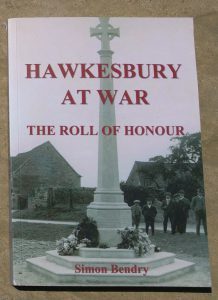 A role model for communities nationwide
A role model for communities nationwideI was also pleased to have the opportunity to give a shout-out for an excellent local history book written and published by my friend Simon Bendry. Hawkesbury at War – The Roll of Honour, his biography of all the people commemorated on the Hawkesbury Upton war memorial, plus all of the villagers who survived active service in the wars, is an inspiring example for communities everywhere. Again, a topical choice, with Remembrance Day imminent.
Fun Fellow Guests
But the show wasn’t only about me, nor was it as serious as I’ve perhaps made it sound. Fellow guest George talked about the latest movie he’d seen (I, Daniel Blake), and Gerard contributed a very entertaining quiz, specially written to match the guest of the week. This time, the quiz was about famous Debbies, Youngs, and cosy mystery detectives. Why the latter? We also managed to squeeze in some jolly conversation about my current work-in-progress, a new cosy mystery novel, kicking off with Best Murder in Show, the first in the Sophie Sayers Village Mystery series.
How to Listen to the SilverSound Show
Lucienne’s blogged about the show on her own author website here. Her post includes her own take on the broadcast, and while you’re over there, take a look at all her other activities including her excellent books and talks.
Here’s a direct link to the show, to which you can “listen again”, by the magic that is the internet, up to three months after the date of the broadcast. Just scroll down to the 10am slot on 4/11/16.
How to Listen to My Latest SoundCloud Appearance
 SoundCloud presenter, historian and author Suzie Grogan
SoundCloud presenter, historian and author Suzie GroganBy chance, I’ve also just received a link to my latest appearance on Suzie Grogan’s fab Talking Books show on 10Radio, which you can listen to ad infinitum on SoundCloud. Here’s a link to Suzie’s Soundcloud channel where you can catch not only my appearance on her show back in July, but also a more recent one with Lucienne Boyce, who’s a great guest as well as an excellent writer and presenter.
Another post will follow soon sharing my first appearance as a performer at the Cheltenham Literature Festival – but that’s another story, in every respect!
To find out more about my fiction books, click here.
To find out more about my non-fiction books, click here.
Filed under: Type 1 diabetes, Writing Tagged: 10Radio, BCfm, Lucienne Boyce, radio shows, SilverSound, Suzie Grogan

November 1, 2016
Halloween vs Guy Fawkes Night? – Sherlock Holmes Helps Me Decide
A quick ponder about the merits and demerits of the way we celebrate 31st October and 5th November
 Sherlock Holmes, we salute you – outside the Sherlock Holmes Museum at 221b Baker Street last week
Sherlock Holmes, we salute you – outside the Sherlock Holmes Museum at 221b Baker Street last weekAs we were clearing away the debris of Halloween late last evening, blowing out the candles that lit trick-or-treaters to our front door, my thirteen-year-old daughter turned to me and said “So next up is Christmas, then”.
I was taken aback when I realised that 5th November, aka Guy Fawkes Night or Bonfire Night in the UK, was completely off her radar, despite a regular community bonfire party in our village and a family fireworks party at my brother’s house.
My incredulity was compounded when, by chance watching the Sherlock episode in which some children pass Holmes with a guy* in a pushchair calling “Penny for the Guy“, she had to ask what that was.
